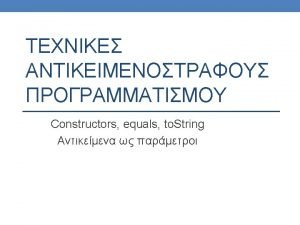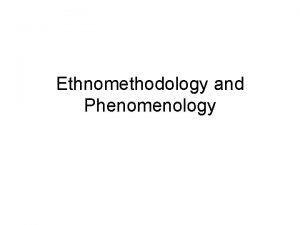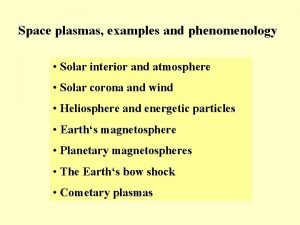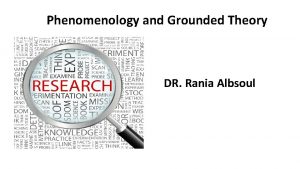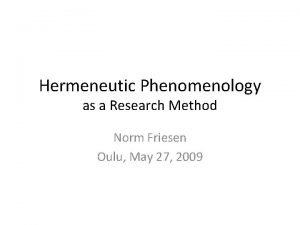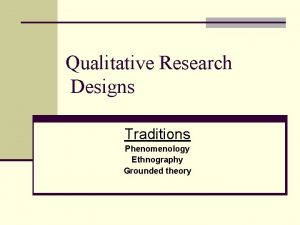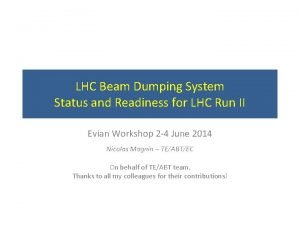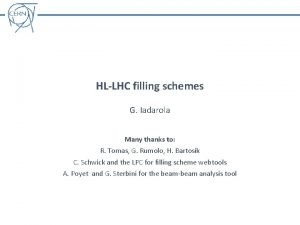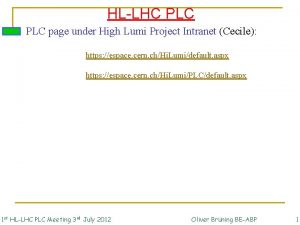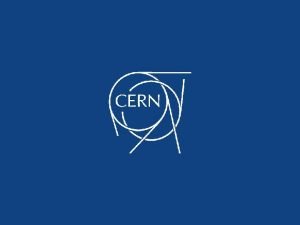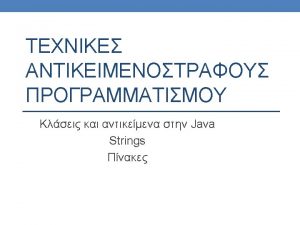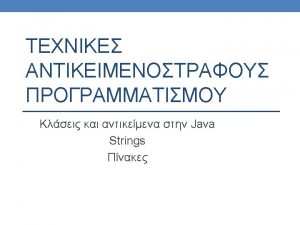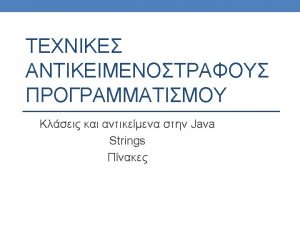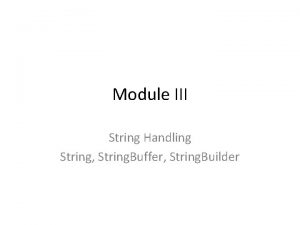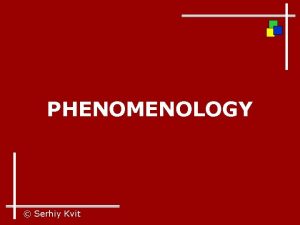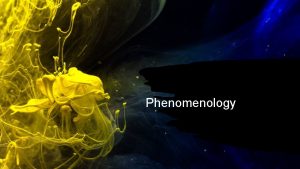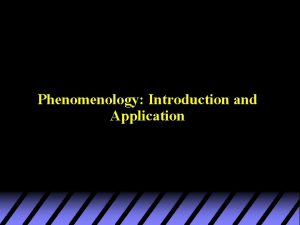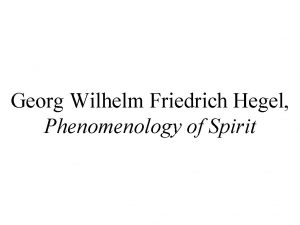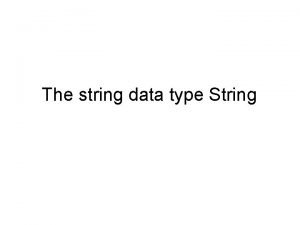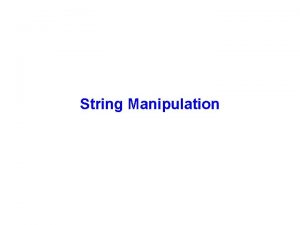String phenomenology at the dawn of the LHC




















- Slides: 20

String phenomenology at the dawn of the LHC era ATLAS ALICE CMS Luis Anchordoqui

Outline ✻ String theory and all that ✻ Extra U (1)´s in D-brane constructions ✻ Photons Dijet signals and gluons as quiver neighbors ✻ LHC Conclusion early discovery reach

➣ LAA, H. Goldberg, S. Nawata and T. Taylor PRD 78, 016005 (2008) ar. Xiv: 0804. 2013 ➣ LAA, H. Goldberg, and T. Taylor PLB 668, 373 (2008) ar. Xiv: 0806. 3420 ➣ LAA, H. Goldberg, D. Lüst, S. Nawata, S. Stieberger and T. Taylor This talk is based on Phys. Rev. Lett. 101, 241803 (2008) ar. Xiv: 0808. 0497 LAA, H. Goldberg , S. , Nawata T. Taylor ➣ LAA, H. Goldberg D. Lüst, and S. Nawata , S. Stieberger and T. Taylor Lar. Xiv 100, : 171603 (2008) ar. Xiv: 0712. 0386 RL 0904. 3547

Te. V Scale Strings ➣ Large extra spatial dimensions and D-brane constructs allow string scale compatible with weak 4 -D gravity Regge recurrences in Te. V region Antoniadis, Arkani-Hamed, Dimopoulos and Dvali PLB 436, 257 (1998) ➣ Open strings can terminate on stack of N identical D branes U(N) gauge group for each stack Polchinski PRL 75, 4724 (1995)

Intersecting D-brane Models I. Antoniadis and K. Benakli hep-ph/0108174

Gauge Fields ■ U(3) : 8 SU(3) gluons, additional U(1) → Cμ coupled to baryon number ■ U(2) : 3 SU(2) W´s, additional U(1) → Xμ Antoniadis, Kiritsis and Tomaras PLB 486, 186 (2000) ■ Minimal Sp(1) : 3 W´s, no additional U(1) Berenstein and Pinansky PRD 75, 095009 (2007) ■ U(1) : another extra U(1) → B μ Yμ (hypercharge) = linear comb of C μ , Xμ , Bμ Conversely

Minimal Quiver Standard Model Berenstein and Pinansky PRD 75, 095009 (2007)

gg → g ■ Does not exist at tree level in field theory ■ But does exist at ¨tree¨ (i. e. disk) level in string theory ■ Involves only gauge bosons so is independent of the fermion embeddings ■ Idea is that

Amplitudes The basic string partial amplitude is (MHV, or Maximum Helicity Violating) Veneziano form factor Parke and Taylor PRL 56, 2459 (1986) Stieberger and Taylor PRL 97, 211601 (2006)

Squared Average Now permute, square, sum, average and project onto photon: ● ● ●

Limiting Cases At low energies s, t, u « M² s ❖ Note that (unwanted) zero mass poles have cancelled – not trivial! Usually implemented by hand through choice of Chan- Paton factor ❖ Burikham, Figy and Han PRD 71, 016005 (2005) Cheung and Liu PRD 72, 015010 (2005)) See, however, Cullen, Perelstein and Peskin PRD 62, 055012 (2000) Near string threshold s ≈ M²s Scattering proceeds through J = 0 and J = 2 angular mom

QCD background ■ SM processes from for ppπº →decay + jet Contamination

Isolated prompt photons Gupta, Choudhary, Chatterji, Bhattacharya and Shivpuri ar. Xiv: 0705. 2740 Major experimental misidentification with high k. T background πº - O (10³) multiplier Imposition of isolation cuts reduces event rate for the high k. T πº background

Bump-hunting ■ Hope to see resonance bumps in data binned in M = invariant mass of + jet ■ Impose rapidity (y) and k cuts on photon and jet and measure cumulative cross sections ■ Look for regions with significant. Tdeviations from QCD background, find interval with bump! ■ Integrate over [Ms - 2 , M s + 2 ] find S/N

Dijet Signals

Signal-to-Noise

Angular distribution : the ■ QCD parton-parton cross sections dominated R parameter by t-channel exchanges ➣ dijets at large rapidity ■ Non-standard contact interactions or excitations of resonances ➣ more isotropic distribution ➣ more uniform distribution in rapidity ■ Define R= N ev (|y�|, |y 2| < 0. 5) N ev (0. 5 < |y�|, |y 2| < 1. 0) ■ For QCD R ≃ 0. 6 independent of M B. Abbott et al [DO Collaboration] PRL 82, 2457 (1999) For previous discussion of R parameter in string theory dijets, see P. Meade and L. Randall, JHEP 0805, 003 (2008)

Regge in the R plot

LHC early discovery reach √s= 10 Te. V S/N= 204/19= 10 10 pbˉ¹ S/N= 127/20= 6 100 pbˉ¹

Remarks and Conclusions ✻ We have identified a tree-level process unique to strings, independent of embedding Discovery R + parameter jet provide of powerful Te. V interesting -scale discriminator string corroboration physics of (at dijet 5 angular ) possible ✻ Sizeable cross sections for Regge recurrences allow distribution a 6 discovery for 5 Te. V 8 Te. V with 100 fbˉ ¹ and ¹Te. V 10% for M M ~ ~ 6. 3 Te. V 1 yr at √sfbˉ =10 and. C-Y ∫ Lmixing dt ~ 100 pbˉ¹ s ✻ Results are conservative in that contribution from tails of higher resonances not included ✻ High-k Z production suppressed relative to ’s by tan²θ T differs radically from evaporation of LHC black holes W = 0. 3
 Licenseid=string&content=string&/paramsxml=string
Licenseid=string&content=string&/paramsxml=string Class dd
Class dd Private string
Private string Str-1
Str-1 Ethnomethodology and phenomenology
Ethnomethodology and phenomenology Phenomenology examples
Phenomenology examples Transcendental phenomenology
Transcendental phenomenology The lived
The lived Phenomenology
Phenomenology Ethnography and case study compare
Ethnography and case study compare Phenomenology vs ethnography
Phenomenology vs ethnography Hermeneutic phenomenology
Hermeneutic phenomenology Feature of qualitative research
Feature of qualitative research Phenomenology vs case study
Phenomenology vs case study Phenomenology and ethnography
Phenomenology and ethnography Phenomenology
Phenomenology Phenomenology
Phenomenology Lhc beam dump
Lhc beam dump Lhc filling scheme
Lhc filling scheme Hl intranet
Hl intranet Lhc logbook
Lhc logbook


